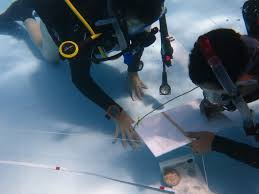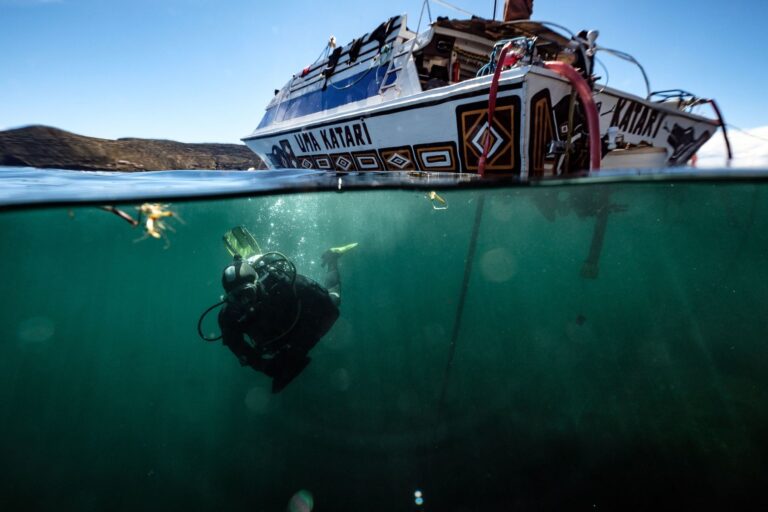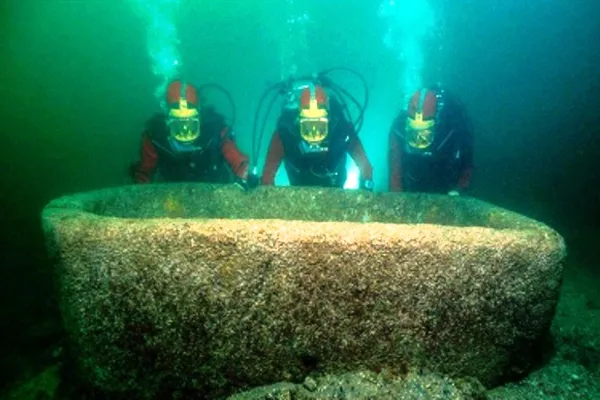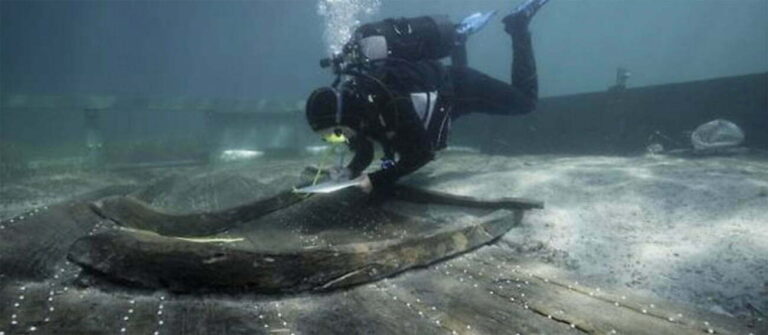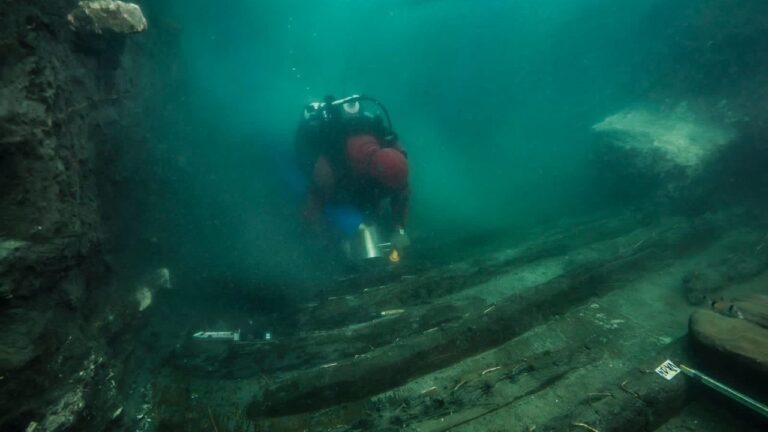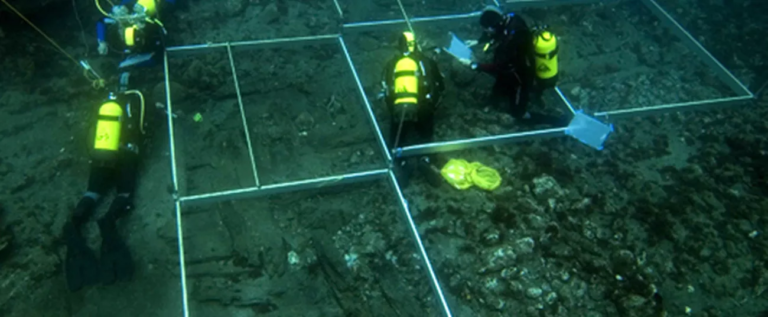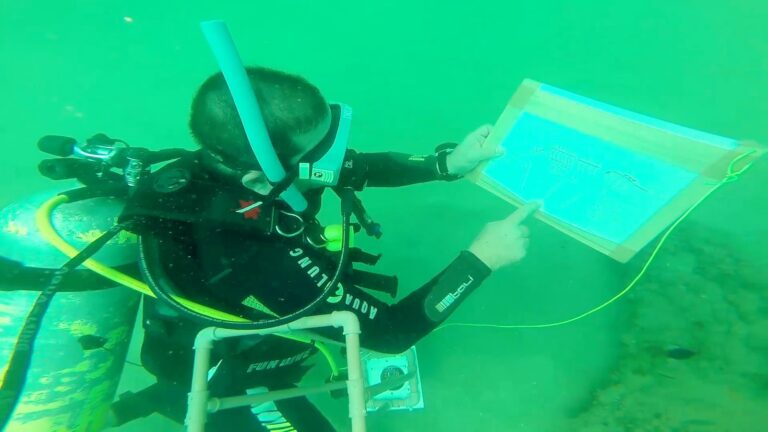Navigating the Past: Technology in Underwater Archaeology
Underwater archaeology plays a crucial role in delving into the mysteries and uncovering the hidden treasures of the past, lying deep within the depths of the sea. This unique field allows us to explore the historical significance of submerged sites and unravel the stories of civilizations long gone. However, the vast and often treacherous underwater environment presents significant challenges to these endeavors.
Technology has emerged as a vital tool in assisting underwater archaeological research, enabling us to navigate through these challenges and uncover the secrets of our submerged cultural heritage. Cutting-edge technological advancements have revolutionized the field, offering unprecedented capabilities and opportunities for exploration, documentation, and preservation.
Table of Contents
Underwater Imaging and Photogrammetry
Underwater imaging technologies, such as photogrammetry and 3D modeling, have become powerful tools in underwater archaeological research. By capturing a series of overlapping images and using specialized software, researchers can create detailed 3D models of submerged artifacts and structures. These models not only aid in the documentation and analysis of underwater cultural heritage but also contribute to its preservation. With the help of underwater imaging and photogrammetry, researchers have been able to gain new insights into submerged sites, reconstructing ancient environments and visualizing their former glory.
Emphasis on technological advancements has brought significant benefits to underwater archaeology, allowing us to unlock the secrets hidden beneath the waves. By continuing to push the boundaries of technology and fostering responsible practices, we can explore, protect, and preserve the submerged cultural heritage for future generations to appreciate and learn from.
The Evolution of Underwater Archaeology
Underwater archaeology has come a long way in the past few decades, transforming from a niche field into a critical discipline for uncovering the secrets of our submerged past. The development of underwater archaeology as a discipline can be traced back to the mid-20th century, when pioneers like George Bass and Peter Throckmorton began exploring the depths of our oceans and lakes in search of historic treasures.
During its early stages, underwater archaeological investigations relied on primitive methods, such as diving bells and basic diving equipment. These tools allowed researchers to descend into the depths, but their capabilities were limited and often dangerous. Despite these limitations, archaeologists of the time managed to make some significant discoveries, showcasing the potential of exploring submerged sites.
However, it was the introduction of key technological advancements that truly revolutionized underwater archaeology. With the advent of sonar technology, researchers gained the ability to accurately map and locate submerged sites. Sonar uses sound waves to create detailed images of the underwater landscape, allowing archaeologists to identify potential archaeological sites and plan their research expeditions accordingly. Additionally, the development of remote sensing technologies like side-scan sonar and multibeam bathymetry further enhanced the mapping and surveying capabilities of underwater archaeology.
These technological advancements have played a crucial role in uncovering submerged cultural heritage. Not only has sonar enabled archaeologists to discover previously unknown shipwrecks and ancient settlements, but it has also facilitated the study and preservation of delicate artifacts in their underwater context. By utilizing ROVs (remotely operated vehicles) and AUVs (autonomous underwater vehicles), researchers can explore and document submerged sites without the need for direct human presence. These advanced robotic devices are equipped with cameras, sensors, and manipulative arms, allowing them to gather data, take photographs, and even collect samples from the depths.
Moreover, underwater imaging technologies, such as photogrammetry and 3D modeling, have significantly enhanced the documentation and analysis of underwater cultural heritage. These techniques enable researchers to create highly accurate three-dimensional models of submerged wrecks and structures, providing valuable insights into their construction and historical significance.
Despite the incredible advancements made in underwater archaeology, the field still faces numerous challenges. Technological limitations and the harsh conditions of working underwater present constant obstacles for researchers. However, with the rapid pace of innovation, the future of underwater archaeology looks promising. Emerging technologies, such as virtual reality, artificial intelligence, and advanced underwater robotics, hold immense potential for further enhancing our understanding of the past beneath the waves.
In conclusion, technology has been integral to the development and success of underwater archaeology. The field has evolved from rudimentary methods to technologically advanced tools that offer unprecedented opportunities for exploration and research. These tools have revolutionized the way we navigate the depths of the sea, uncovering historical treasures and expanding our knowledge of submerged cultural heritage. As we continue to push the boundaries of technological innovation, we ensure the preservation and understanding of our past for future generations.
Sonar and Remote Sensing
Sonar and remote sensing technologies have revolutionized the field of underwater archaeology by enabling researchers to map and locate submerged sites. Sonar works by emitting sound waves into the water and measuring the time it takes for the waves to bounce back after hitting an object. This allows archaeologists to create detailed maps of the seafloor and identify potential archaeological sites.
One example of remote sensing technology used in underwater archaeology is side-scan sonar, which produces high-resolution images of the seafloor by using sonar beams that are directed to the sides of the instrument. This allows archaeologists to identify and map specific features, such as shipwrecks or underwater structures.
Another remote sensing technology widely used in underwater archaeology is multibeam bathymetry. This technique uses multiple sonar beams to measure the depth and shape of the seafloor. By combining these measurements, archaeologists can create detailed three-dimensional maps of underwater sites, providing a better understanding of their features and layout.
These technological advancements in sonar and remote sensing have led to numerous successful discoveries in underwater archaeology. For instance, the discovery of the RMS Titanic was made possible through the use of sonar technology. Side-scan sonar images revealed the wreckage of the famous ship lying at the bottom of the Atlantic Ocean.
Another remarkable discovery was the Antikythera shipwreck off the coast of Greece. Side-scan sonar and multibeam bathymetry were used to locate the ancient shipwreck, which contained the Antikythera mechanism, a complex mechanical device that is considered one of the earliest known analog computers.
In conclusion, sonar and remote sensing technologies have transformed the field of underwater archaeology, allowing researchers to explore and map submerged sites with greater precision. These advancements have led to significant discoveries and have expanded our knowledge of the past hidden beneath the waves. As technology continues to advance, it is likely that even more remarkable findings in underwater archaeology will be made possible in the future.
ROVs and AUVs
Remotely Operated Vehicles (ROVs) and Autonomous Underwater Vehicles (AUVs) play a crucial role in underwater archaeological investigations. These technologically advanced tools enable researchers to explore and document submerged sites with precision and efficiency.
ROVs are remote-controlled robotic vehicles that are operated from the surface by a human operator. They are equipped with cameras, lights, and manipulator arms, allowing archaeologists to visually inspect and document underwater sites. ROVs are particularly useful in deep-sea archaeology, where human divers cannot reach due to the extreme depths and harsh conditions. They can capture high-quality images and videos, providing valuable visual records of submerged artifacts and structures.
AUVs, on the other hand, are autonomous vehicles that are pre-programmed to carry out specific tasks. They are efficient in mapping large areas and collecting data in a systematic manner. Equipped with advanced sensors and instruments, AUVs are capable of conducting detailed surveys of submerged sites. They can collect data on water properties, seafloor topography, and even detect and identify archaeological features. AUVs can operate for extended periods, covering vast areas that would take a significant amount of time and effort for human divers to accomplish.
ROVs and AUVs have played a pivotal role in underwater archaeological investigations, contributing to significant discoveries and advancements in the field. For example, in the explorations of ancient shipwrecks, ROVs have been instrumental in the detailed documentation of wreck sites, allowing archaeologists to study and interpret the remains without the need for invasive physical excavation. The detailed visual data collected by ROVs has also facilitated the creation of three-dimensional models, which aid in the analysis and interpretation of submerged structures.
Moreover, AUVs have been used to survey large areas and locate submerged sites, such as ancient settlements or lost civilizations. AUVs equipped with side-scan sonar have been able to create detailed maps of the seafloor, identifying anomalies and potential archaeological sites. This method has led to the discovery of previously unknown ancient shipwrecks and submerged landscapes. The data collected by AUVs is invaluable in prioritizing and planning further archaeological investigations.
In conclusion, ROVs and AUVs are indispensable tools in underwater archaeological research. Their capabilities in exploring and documenting submerged sites have revolutionized the field, enabling archaeologists to uncover and investigate underwater cultural heritage with remarkable precision. The use of these advanced technologies has not only expanded our knowledge of the past but has also contributed to the preservation and protection of our submerged history for future generations to appreciate and learn from.
Underwater Imaging and Photogrammetry
Underwater imaging technologies, such as photogrammetry and 3D modeling, play a crucial role in underwater archaeology. These technologies enable researchers to document, analyze, and preserve underwater cultural heritage with unprecedented accuracy and detail.
Photogrammetry, a technique that uses photographic images to create highly accurate 3D models, has proven to be a valuable tool in underwater archaeology. By capturing multiple overlapping photos of an underwater site, photogrammetry software can stitch these images together and generate a detailed 3D model of the submerged area. This allows archaeologists to explore the site virtually and make detailed measurements and observations without disturbing the physical artifacts. Photogrammetry has been successfully used in projects such as the documentation of shipwrecks and the mapping of underwater landscapes.
In addition to photogrammetry, underwater imaging technologies also include sonar-based imaging techniques. Side-scan sonar, for example, uses sound waves to create detailed images of the seafloor and underwater structures. These sonar images provide valuable information about the size, shape, and distribution of archaeological features. Multibeam bathymetry, another sonar-based technique, allows researchers to create high-resolution maps of the seafloor, providing a broader context for interpreting archaeological sites.
The application of underwater imaging and photogrammetry goes beyond documentation and exploration. These technologies also facilitate analysis and preservation of underwater cultural heritage. By creating a digital record of a site or artifact, researchers can conduct detailed analysis and make comparisons with other sites or artifacts. This can help in understanding cultural connections, trade networks, and technological developments in the past.
Moreover, these imaging technologies also aid in the preservation of underwater cultural heritage. By creating detailed and accurate records, researchers can monitor and assess the condition of submerged sites over time. This information is crucial for developing strategies to protect and preserve these sites for future generations.
In conclusion, underwater imaging technologies, such as photogrammetry and sonar-based imaging, have revolutionized underwater archaeology. They enable researchers to document, analyze, and preserve underwater cultural heritage with unprecedented accuracy and detail. These technologies have been successfully applied in various research projects, allowing archaeologists to explore, understand, and protect their discoveries in the depths of the sea. As technological advancements continue, it is crucial to embrace these tools responsibly and use them to enhance our understanding and appreciation of our past beneath the waves.
Challenges and Future Prospects
Underwater archaeologists face numerous challenges in their pursuit of uncovering submerged cultural heritage. One of the main difficulties is the technological limitations that come with working in the underwater environment. The equipment used by underwater archaeologists must be specially designed to withstand the immense pressure and corrosive nature of seawater. This often means that the tools available are limited in their capabilities and require continuous maintenance and upgrades.
Another challenge is the challenging underwater conditions that archaeologists must navigate. Strong currents, poor visibility, and unpredictable weather can make underwater excavations and explorations extremely difficult and dangerous. These conditions not only make it harder to locate and access submerged sites, but they also pose risks to the safety of the archaeologists involved in the research.
Despite these challenges, there are potential advancements and emerging technologies that offer hope for the future of underwater archaeological research. One area of development is the improvement of underwater imaging technologies. High-resolution imaging systems, such as advanced sonar and photogrammetry, allow archaeologists to create detailed maps and 3D models of submerged sites. These advancements not only aid in the documentation and analysis of artifacts but also contribute to the preservation of underwater cultural heritage.
Furthermore, the use of remotely operated vehicles (ROVs) and autonomous underwater vehicles (AUVs) has proven to be invaluable in underwater archaeological investigations. These autonomous and remotely controlled robots can navigate the underwater environment with precision and carry out tasks such as mapping, recording, and sampling. They significantly reduce the risks faced by human divers and expand the possibilities for exploration in challenging underwater conditions.
While the future of underwater archaeology looks promising, it is important to consider ethical considerations and the responsible use of technology in this field. As underwater archaeologists gain access to increasingly advanced tools, there is a need for strict guidelines and regulations to ensure that artifacts and cultural heritage are respected and protected. Responsible use of technology includes meticulous documentation, responsible excavation practices, and respectful engagement with local communities and stakeholders.
In conclusion, underwater archaeology faces unique challenges due to technological limitations and the demanding underwater environment. However, the future prospects for this field are bright, thanks to emerging technologies and advancements in areas such as underwater imaging and ROVs/AUVs. As we continue to navigate the past, it is crucial to prioritize responsible use of technology and ethical considerations to preserve and uncover the submerged cultural heritage that lies beneath the waves.
Conclusion
In conclusion, technology plays a significant role in the field of underwater archaeology. It has revolutionized the way we explore and uncover submerged cultural heritage, enabling us to navigate the past with greater accuracy and precision. The evolution of underwater archaeology as a discipline has been intertwined with advancements in technology. From the early days of diving bells and basic diving equipment, we have come a long way in utilizing cutting-edge tools and techniques.
One of the key technological advancements in underwater archaeology is sonar and remote sensing. Sonar has proven to be an invaluable tool in mapping and locating submerged sites. By using sound waves, we are able to create detailed images of the seafloor, revealing hidden treasures that were once inaccessible. Additionally, remote sensing technologies, such as side-scan sonar and multibeam bathymetry, have allowed us to accurately identify and document underwater sites, leading to successful discoveries.
Another important aspect of underwater archaeology is the use of remotely operated vehicles (ROVs) and autonomous underwater vehicles (AUVs). These high-tech devices allow us to explore and document submerged sites with precision and efficiency. ROVs and AUVs can maneuver in difficult underwater conditions, capturing high-resolution images and videos of archaeological sites. They have played a pivotal role in underwater archaeological investigations, providing valuable data and insights.
Underwater imaging technologies, such as photogrammetry and 3D modeling, have also contributed significantly to the field. These tools aid in the documentation, analysis, and preservation of underwater cultural heritage. By creating digital replicas of submerged artifacts and structures, researchers can study them in detail without causing any damage. This technology has been successfully applied in numerous research projects, enhancing our understanding of the past.
However, underwater archaeologists face various challenges, including technological limitations and working in challenging underwater conditions. Despite these challenges, the future of underwater archaeological research looks promising. With advancements in technology, we can expect further enhancements in exploration and preservation. It is essential that we continue to develop new tools and techniques to uncover and protect our past beneath the waves.
In conclusion, technology has played a crucial role in underwater archaeology, expanding our knowledge of submerged cultural heritage. Through sonar, remote sensing, ROVs, AUVs, and underwater imaging technologies, we have been able to navigate the past, uncovering historic treasures that were once hidden in the depths of the sea. However, this is just the beginning. The continued development of technology is crucial in uncovering and preserving our past. By responsibly utilizing these technological advancements, we can ensure that the submerged cultural heritage remains protected for future generations to discover and appreciate.

